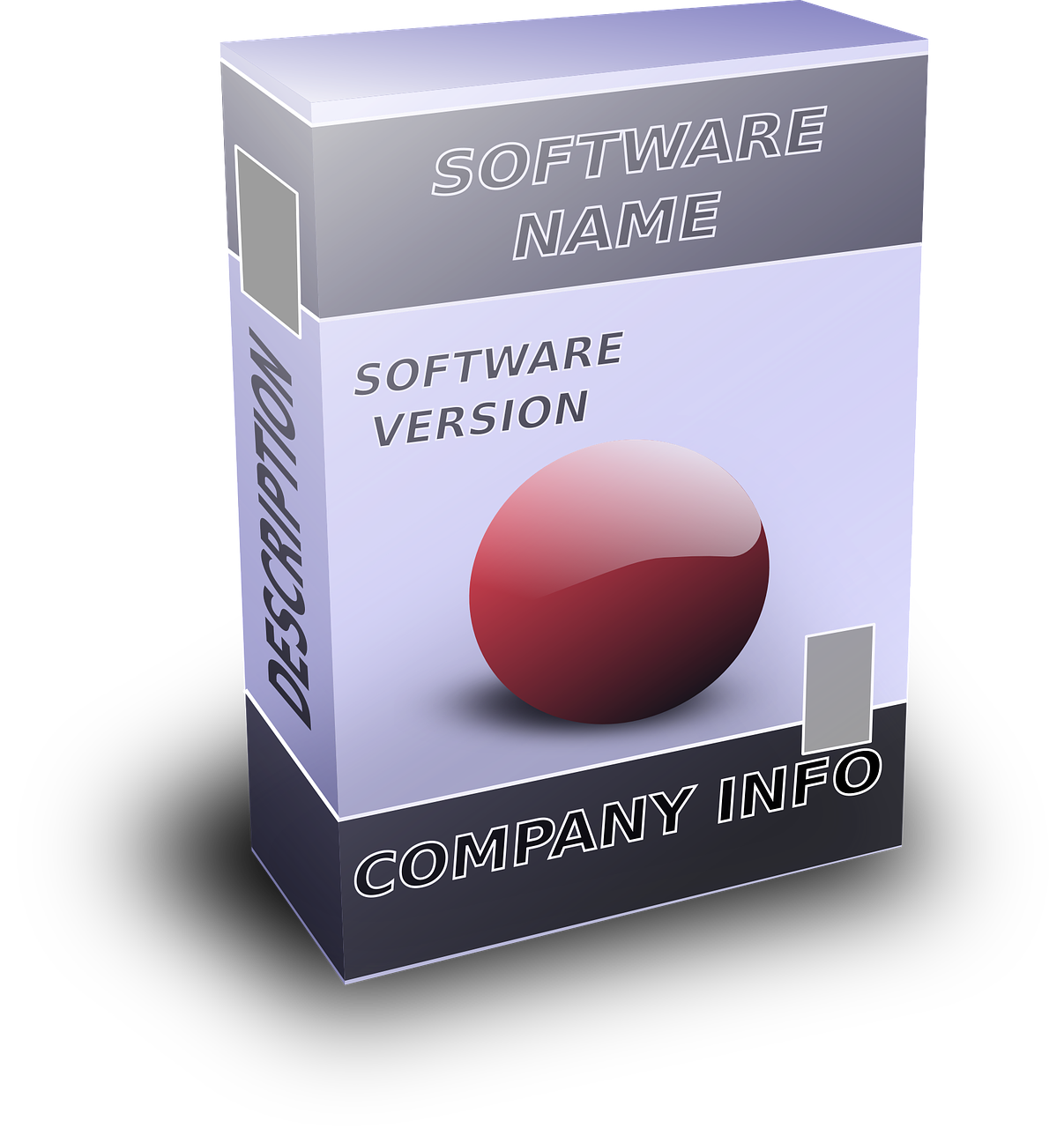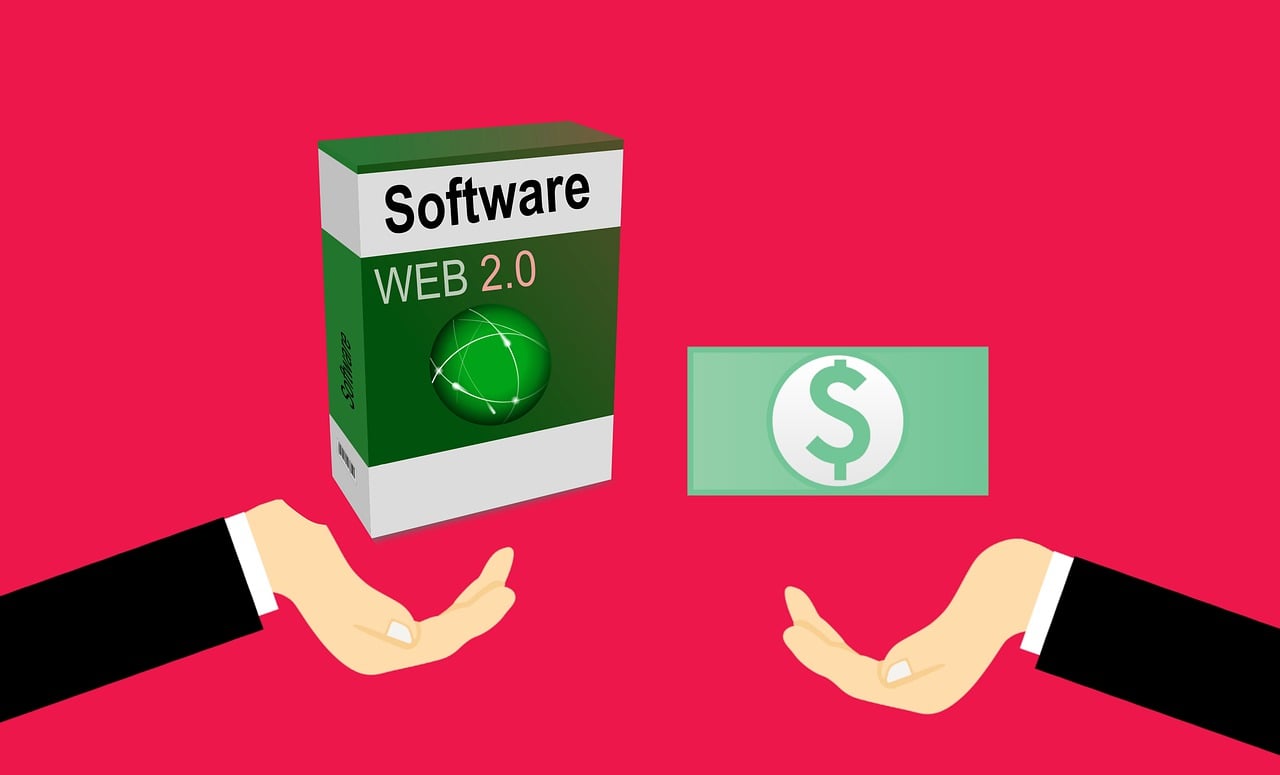
Mar
How Can Software Development Companies Do a Better Job of Targeting New Customers?
jerry9789
0 comments
Brand Surveys and Testing, Burning Questions
Software Marketing Today
If you look all over the Internet, you’ll find a multitude of articles talking about the most effective strategies for marketing your software development company. Ranging from seven to fifteen different strategies, these articles feature proven techniques like email marketing, social media or content marketing, pay-per-click (PPC) advertising or paid ads, and the like. For our part, we boiled it down to five key strategies here.
But with how tough competition is in the software development industry, it won’t be any surprise if the thought of doing more regarding targeting new customers has crossed your mind. Most likely, software companies are using the same marketing strategies you’ll find online, so employing a different tactic would help your company stand out from the rest or dominate a particular niche. But how do you come up with a different game plan when the field of software marketing has apparently been mapped out with all that strategic information available out there?
Most software marketing strategies focus on targeting and resonating with the ideal customer, from identifying the most profit-optimal client to tailoring your messaging to appeal to that buyer persona. They talk about the variety of approaches you can take to capture the attention and engage with your target consumer. But what if aside from thinking about who your ideal customer is, you take your marketing one step further by coming up with the best possible user experience, from the time your target persona first hears about your company to the point that they’re not only your regular customer but also your company’s best advocate?
Copyright Karolina Grabowska
Focusing On the Customer Experience
Now you might be thinking that this either sounds like the same thing or even antithetical to the concept of optimizing your marketing efforts by recognizing your ideal customer. You will still be doing the same things you’ve done in identifying and reaching out to your target client, such as demographics, psychographics, even SEO, but with this approach you are not just looking outwards from the lens of company marketing but rather from the perspective of a customer looking for a solution to their problem.
With that thought, you start off with the question of “exactly what problem was my software meant to solve and how does it solve it?” Are you able to deliver that idea in words that are easily understood by your ideal customer? Are you targeting the end-user or is there a decision-maker involved? If there are other similar companies offering the same product, how do you set yourself apart with what you can do differently from the vantage point of a prospective client? Can you encapsulate all that if all you have is one tagline or even one image to catch consumer attention? If it does catch attention, what would hook your best prospect into learning more about the software? As you can tell, some if not most of these questions also serve as a good foundation for the branding of your software product.
Copyright Fauxels (Pexels)
Local Presence Focus
You can also consider looking locally to see if the solution your software is offering is relevant to your community. If everything falls into place, not only will you enjoy the benefit of a consumer base right at home but more often than not, local communities have proven to strongly appreciate and support homegrown talent. This in turn could lead to an optimized and visible Google Business profile in search results and Google Maps. Just imagine how a local consumer feels discovering that a company offering a solution to their problem is found right in their own neighborhood.
Digital marketing is all the rage nowadays but exploring your local market also opens up the opportunity to try traditional marketing such as flyers and mailers. You can also even try hosting events or partnering with local companies, which would be a good way to practice and gain experience especially if you have plans to expand further not long after and would consider similar marketing activities and collaborations like influencer marketing and guest blogging.
Focusing locally is also a good place to start with SEO. Backed by keyword tools and planners to generate long-tail keywords, approaching SEO with the mindset of a local consumer with a specific objective in mind allows you to experiment more efficiently with a narrowed set of key phrases compared to what you had to work with had you jumped into a larger market base. Once you figure out the keywords that work best from your localized set, you can then riff off from these examples as you start expanding beyond your community.
Copyright MR-PANDA
Website Optimization and Multimedia Content
You can then optimize your website and its content with those keywords. Design your website with the added perspective of a customer visiting for the first time: navigating it should be intuitive with an engaging interface and interesting content. Make sure it’s mobile-friendly as well. If you don’t know it yet, search engines favor fast loading websites so regularly test your site speed especially whenever you make any changes or updates. Your Google Business profile might capture would-be clients’ attention, but it’s at your website where most of the action should take place, so be sure you have plenty of quality backlinks to it.
Whether your website is found through search results or a backlink, your first-time visitor would be expecting to find content elaborating on why your software is the right product for them. Aside from a blog section and other written elements, make sure to devote some space for informative multimedia materials like video tutorials or walkthroughs. Your written content can have all the information you would like to relay about your software and your company, but your visitor might not have all the time in the world to go through all those. Instead, they might stick around for a short but engaging and entertaining video.
Incorporate short animated infographics or explainers too into your website, thus sharing information about your software and your company. Vary your videos and animated graphics between informative and technical to fun and entertaining. This is also an opportunity to make your software stand out from other similar products or for your branding to express its uniqueness. You may also use the same multimedia content for your video or email marketing so there’s a sense of familiarity when your customer lands on your website for the first time.
Speaking of familiarity, you might also engage with your customer even more by providing free trial/limited time offers and Freemium subscriptions right from your website. These allow your customer to enjoy the basic features of your software and truly get a feel for what your product offers, perhaps leading them to opt for a Premium or higher-tier subscription for additional or complete access. If possible, you can offer a certain feature of your software to be available on your website; for example, a photo editor whose output could be downloadable either in a reduced but acceptable quality or with a watermark.
Making free trial/limited time offers and Freemium subscriptions available on your website also helps better position the pricing information of your software. Sure, you can include a pricing comparison chart between your software and its competitors, but firsthand experience of your product could prove to be the more convincing or deciding factor for your customer. Nevertheless, ensure that you are clear and transparent with the pricing for your software.
Copyright Andrea Piacquadio
Testimonials and Case Studies
A tutorial or explainer video would give your customer the information they need to understand how to use your software, but it might resonate better with them to use a video to tell the story behind the origins of your product. Sure, your technical videos would spell out what problem your software is solving, but they won’t be able to tap into connections of relatability that might be achieved by a video with a compelling story on how you came up with your product. Trust and loyalty can be earned by a product and company that consistently deliver what they promised, but you can add another layer to that connection by becoming relatable and personal to your customer.
That brings us to client testimonials. Depending on their length or how they are delivered, testimonials can be a once-over or your customer will be able to find one or two with similar experiences advocating the effectiveness of your software. Written testimonials are fine and the norm, but you might consider having a few published in video format. Depending on your research, you might even be able to use your video testimonials in your outbound marketing.
And they don’t all have to be too straight or technical; an effervescent and witty one-liner from a supporter that drew a chuckle from you might have the same effect on visitors to your website and lighten things up.
If applicable, case studies can be employed for the combined effect of walkthroughs and testimonials. While it’s usually delivered from the technical perspective of the company, it would pander to a tech-savvy customer who is looking for a more in-depth or niche look at how your software can be applied. Bonus points too if the client using the software in the case study is well-known and well-respected. But don’t let all that technical stuff limit you to jargon and technobabble; consider using language that’s less robotic or monotone and more conversational and organic, taking the opportunity whenever possible to explain or simplify certain techspeak terms or to translate highly specialized situations into simple, relatable language.
Client success stories can also function as a case study or be as concise as a testimonial. In addition, you can also utilize or embed webinar recordings in your website. The goal of these elements in your website is to demonstrate to your would-be customers that their trust and confidence would be well-placed in both your software and your company.
Copyright Fauxels (Pexels)
Online and Offline Community Marketing
Don’t just limit that trust and confidence to the confines of your website, but expand it to the greater community out there. You’ve developed your blogs, guides/tutorials, multimedia, case studies and other materials on your website with the mindset of not only being informative and instructional, but also engaging at the same time, so the same content should work just as well on social media and the like.
Yes, you are promoting your software and company on social media but instead of being overly promotional, provide value to your target audience by directing your content toward addressing common pain points and questions. This way, you establish yourself as a thought leader while connecting with your audience at the same time.
Don’t overload your posts with information, though; you can use the “breadcrumb” approach where you open with a particular pain point and lightly touch on what your software can do to solve it and then add a backlink to your website if they would like to learn more. Aside from sharing a whole video or webinar, you can also lift a particularly interesting section from it to share on social media along with a link where they can watch the full content. Break the monotony every now and then by sharing funny or witty content that’s either relevant to your software or industry as well as a particular occasion or holiday.
Be mindful of the audience and the platform you’re sharing your content with as well; your entertaining and engaging videos would connect well with the Facebook or Twitter crowd, but the more technical stuff such as case studies and webinars might be better received by industry experts, potential professional connections and decision-makers on LinkedIn.
Just as you would engage with your audience, potential and existing customers and their questions and concerns on your social media accounts, you might as well do the same at the forum threads of Quora, Reddit, and other online communities to help build brand awareness and your industry expert reputation.
Knowing or understanding your target audience and the platform would also help lead to tapping into influencer marketing, as you observe the most relevant online personalities drawing the most engagement with likes, reactions, shares, retweets, shoutouts, and more. The same can be applied for other companies you can consider partnering with or guest blogging for, as well as other products you can integrate with, allowing you to connect to new customer bases you wouldn’t have otherwise reached. Of course, you would still need to carefully evaluate the pros and any cons of partnering with a particular influencer, company or product.
In addition to a strong online presence, there’s a larger offline community that you shouldn’t forget to connect with as well. Make your presence felt in the real-world by customers, decision-makers, and other field professionals by attending industry events, hosting live demos, participating in local community events or if possible, sponsorship programs.
And what could also be more real to a would-be customer than someone they know who not only uses your product but has good things to say about it? Most marketing strategies focus on new customer acquisition, but it’s been proven time and time again that it’s much more cost-effective to retain an existing client versus acquiring a new one. A key point to keep in mind is to treat an existing client like a new customer by also extending to them special offers from time to time like free trials, limited time promotions, or exclusive first access to new or upcoming features. This sense of exclusivity can help counter feelings and thoughts that only the new customers are getting the better deals. The current customers have, in fact, rightfully earned the privileges of loyalty. Imagine how much more powerful and transformative it is to have positive word-of-mouth generated by a long-time customer advocating in your behalf, thanks to this sense of exclusivity and belonging they feel.
Copyright geralt (Pixabay)
Like we’ve noted earlier, optimizing the user experience from prospect to advocate based on the perspective of your customer goes hand-in-hand with the conventional software marketing approach of identifying and targeting your ideal consumer. It might be a novel approach to you, or you already have a lot on your plate with the myriad of software marketing strategies available, but you just couldn’t dare leave any stone unturned; worry not, as you can rely on one market research company who has been performing highly innovative and consistent marketing research work for thirty years and counting.
With a variety of services, Cascade Strategies has been conducting, adapting, and innovating market research studies for over three decades for an honor roll of respected clients. In addition to incorporating ground-breaking methodologies, Cascade Strategies also takes full advantage of the high level of professional research experience and imagination our staff brings to the table to uncover breakthroughs leading to the best marketing solutions for your company. Contact Cascade Strategies today to learn how we can help your software development company do a better job of targeting new customers.

Jan
Nonprofit Marketing Basic and Advanced Strategies
jerry9789
0 comments
Brandview World, Burning Questions
What is Nonprofit Marketing?
Effective marketing allows businesses to thrive and profit, but it is just as important for nonprofit organizations. You could even say that coming up with a strong marketing strategy is even more crucial for nonprofit organizations, given their limited resources and manpower.
With competent and dynamic nonprofit marketing, a nonprofit organization can promote its cause, ideals, and services; at the same time, it can raise funds or recurring donations as well as call the attention of would-be volunteers, sponsors, or supporters.
What are the Types of Nonprofit Marketing?
Nonprofit marketing campaigns come in a variety of types ranging from email, social media, video, website, content, digital, and even in public speaking form. Investopedia highlights the following three nonprofit marketing campaigns:
- Point-of-Sale Campaign – A donation is solicited during the checkout process for an online or in-person purchase a customer is making.
- Message-Focused Campaign (Event Marketing) – This type of strategy promotes a nonprofit organization by utilizing in-person or online events, most especially the trending or high-profile kind. Aside from focusing on the mission of the organization, they also use the opportunity to raise funds as well as encourage volunteerism for and support of their cause.
- Transactional Campaign (Partnership Marketing) – The nonprofit organization teams up with a for-profit business (or businesses). The corporate partner promotes the nonprofit organization’s cause by pledging to donate a portion of certain purchases towards the latter’s fundraising efforts. In some cases, the business utilizes social media wherein they pledge to donate to their nonprofit partner for every like or share of their promotional post. This campaign also allows the business to underscore its corporate values and in turn, generate positive publicity.
Copyright RDNE Stock Project
Advanced Forms of Nonprofit Marketing
Forbes.com has noted that nonprofit organizations function differently from traditional businesses so some online marketing strategies may not work well with nonprofits. Recognizing this disparity, online giants like Google and YouTube have come up with customized options to help with nonprofit marketing.
- Google Grants for AdWords – This program gives a nonprofit $10,000 per month in AdWords credit for advertising in Google. However, there are strict eligibility requirements, such as a current 501(c) (3) status for valid charities. There are also rules to follow to keep the grant like your ad must be focused on sending people to your website and prohibiting displaying ads from Google AdSense. The application and waiting process takes time, too. You can also visit the Google for Nonprofits page for more information on Google Apps for nonprofits.
- YouTube Nonprofit Program – Instead of money, this program provides additional features and benefits for your YouTube videos such as a donate button, live streaming, and call-to-action overlays (which send viewers to a website or specific webpage when clicked). Members of the program can also apply separately for production resources which allows you to get production access to shoot or edit your video at YouTube’s Los Angeles studio. The eligibility requirements for the program are identical to Google Grants, but you need to already have a YouTube channel with some good videos uploaded before applying.
- Facebook Nonprofit Opportunities – While they don’t offer a program for nonprofits, there are a lot of different apps you can add to your Facebook page to support your nonprofit cause. DonateApp and JustGiving are a couple of apps that can help add a “Donate Now” button to your Facebook page, allowing a supporter to donate at their convenience here instead of heading over to your website to make the same.
Copyright Gustavo Fring
How to Create a Nonprofit Marketing Plan
- Set Marketing Goals – Are you looking to raise funds with your next campaign? Or maybe encourage more volunteers or supporters to help? Perhaps you want to drive more people to visit your website. You’ll need to know and understand first what you’re trying to achieve to determine the focus and direction of your marketing plan. Define your marketing goal with the SMART method– it should be specific, measurable, attainable, relevant, and time-based.
- Identify or segment your audiences – Once you have clear goals, you’ll then need to identify your target audience. You’ll want to optimize your nonprofit’s limited resources by customizing your marketing messaging to resonate with your intended audience. Or if you’re looking to target different groups, you’ll need to segment your audience into different personas so you’re able to adjust your campaign for each type.
- Define Your Marketing Message – With your goals and audience(s) set, you’ll now be able to craft the central messaging or theme of your campaign. This is especially important if you’re segmenting your audience- you’re customizing your messaging per persona but the central theme remains the same throughout. Your messaging must convey not only the importance of your cause but also why your audience should care about your efforts. It also must be inspiring and compelling enough to convince them to take action or at the very least, make a memorable impression.
- Choose Your Marketing Strategies – You now have the what, who, and why of your nonprofit marketing campaign; it’s now time to establish the how. Aside from email and social media, are you planning to do video or content marketing? Are there any businesses you can partner with maybe? Would an event work as well for this campaign? Depending on your target audience, your marketing plan may involve utilizing more than one platform for delivering your message.
- Analyze results and make adjustments – The goal and campaign type you’ve chosen come with clear key performance indicators to assess your progress. Sometimes you won’t get your intended results the first time but you can use the data or insights you’ve gained and use it to finetune or set baselines for your next campaigns. Just keep tracking and reviewing your data, making adjustments here and there or perhaps even dropping elements that don’t work.
Copyright RDNE Stock Project
Cascade Strategies can help you and your nonprofit organization create and develop your marketing plan. With over three decades of market research experience and top-of-the-line services that include Segmentation Studies and Qualitative Research, let us assist you in heightening awareness about your cause as well as finding the ideal volunteers, sponsors, and donors to support your ideals.

Jul
How to Market Your Software Company in 5 Steps
jerry9789
0 comments
Brand Surveys and Testing, Brandview World, Burning Questions
According to Investopedia, only 80% of startups survived after one year, with reasons for failure ranging from money running out, being in the wrong market, lack of research, bad partnerships, ineffective marketing, and not being an expert in the industry. As a counterpoint, they cite activities such as setting goals, accurate research, loving the work, and not quitting as ways a small business can avoid failing.
Is it really that simple? Maybe not, but here at Cascade Strategies we believe it’s at least reducible to a clear step-by-step process. Here are our ideas — 5 steps on how to market your software company effectively.
1. Identify brand, goals and what makes your company unique
The first step in marketing a software (or company in general) is to determine your strategy by identifying and building around your goals. In addition to generating revenue, are you planning to establish a niche in your market? Is it also in your plans to continually develop your software through organic user feedback? You will also need to come up with a brand that not only aligns with the goals you come up with, but also helps you stand out from the competition. With thousands of software companies in the market, you’ll need to highlight what makes your software unique and what new or different property you bring to the table. A clear identity not only makes your brand more recognizable, but also makes it more strongly connected to the values you represent, leading to the formation and promotion of your reputation.
2. Identify target audience, especially the decision maker
Part of a marketing strategy is recognizing not only who you should be selling to but also who will most likely convert to a loyal customer. Through demographics, psychographics and segmentation, you’ll be able to form or identify your ideal customer and thus focus your marketing efforts on this particular client type. However, it works a little differently with Software as a Service (SaaS), since you will often need to appeal to a specific decision maker at a company (i.e., a specific title) who will have the strongest hand in choosing your particular software over competitors. You can confront this problem by not only flaunting what your software does best but also extolling the benefits it brings to the workplace in terms of productivity and efficiency.
3. Create a strong online presence (website, social media, SEO, email marketing, influencer marketing, video marketing)
As a software company, it’s vital that online marketing be part of your strategy. You can utilize traditional marketing, but online marketing offers more advantages when it comes to product promotion and customer engagement. For starters, it’s more cost effective and gets faster results. Webfx.com goes into detail regarding the advantages online or digital marketing possesses over traditional channels here.
Your website will need to be optimized for both SEO (so you rank in search pages) and function (so you effectively represent the quality of your brand). A slow or glitchy software company website won’t bode well for the performance of the product you’re selling. Keep your websites and social media pages up-to-date and active as much as possible to make them welcoming and inviting for customer interaction and feedback. Try to maintain your online presence on more than one social media page. Teamdeck said it best on the importance of social media: If a company doesn’t exist on social media, it looks suspicious.
Collaborate with influencers with similar values who have a following matching your intended audience. Reputable influencers can greatly help boost product sales and trust by lending their credibility to your offering. And don’t forget coming up with relevant and appealing videos: the essential message of lengthy prose literature can be delivered just as effectively and in lesser time with a well-made video.
4. Personalize or be relatable (origin story, client success stories, face-to-face meetings, events or interactions, what common problem you want to solve and how your product solves it)
Software companies can run the risk of employing too much technical jargon in their marketing, so why not try the more personable, relatable approach? Develop a simple but well-written account of how your company started or an entertaining retelling of the original question or dilemma that you sought to resolve through the development of your software. Even better if this question or dilemma can be framed in a common or everyday situation that most people can relate to.
Client success stories are just as effective as direct customer testimonials might be in similar situations. Potential customers might be encouraged to use or continue to use your product knowing it can be instrumental in the resolution of the problems they’re facing. But these are not the only places where you can be relatable. Face-to-face meetings or events to promote your product or engage with your customers can bring your company out of any cold, impersonal impression they might otherwise have.
5. Let prospective clients experience your product (demos, Freemium, free trial/limited time offers)
And to tie into the last point, personal events also present the opportunity for demos. Just imagine all those prospects you can convert by giving them firsthand experience with your product while offering them real-time assistance with any questions or problems they might have. Live demos are one of the best ways to show off what your software does best while forming a connection to a prospective client. Of course, you’re not only limited to demos, as you can also let customers experience your product with free trial/limited time offers and Freemium subscriptions. The latter allows prospects to enjoy some basic features of your software without the time pressure of the former. This way, they’re able to get a good feel for how they can benefit from your software and perhaps edge closer to a Premium subscription to unlock more features.
Copyright Mohamed_hassan (Pixabay)
These 5 steps should help get you out the door in creating a good marketing strategy for your software company. But as pointed out by feedough.com, once people start using your software, you need to keep them engaged so they renew their subscription and recommend it to others. Maintain the relationships you form with your customers by continually following these outlined steps, making reasonable adjustments every now and then as the market and trends shift.
Some further reading:
https://www.webfx.com/industries/tech/software/
https://www.linkedin.com/pulse/7-effective-marketing-strategies-software-companies-shahmeer-khan
https://teamdeck.io/toolbox/marketing-strategy-for-a-software-house-what-should-it-include/
https://www.feedough.com/software-marketing-strategy/
https://blog.tmetric.com/7-marketing-strategies-for-software-development-companies/
Welcome to Cascade Strategies

info@cascadestrategies.com
2032 Newport Way NW,
Issaquah, WA 98027(425) 677-7430



















